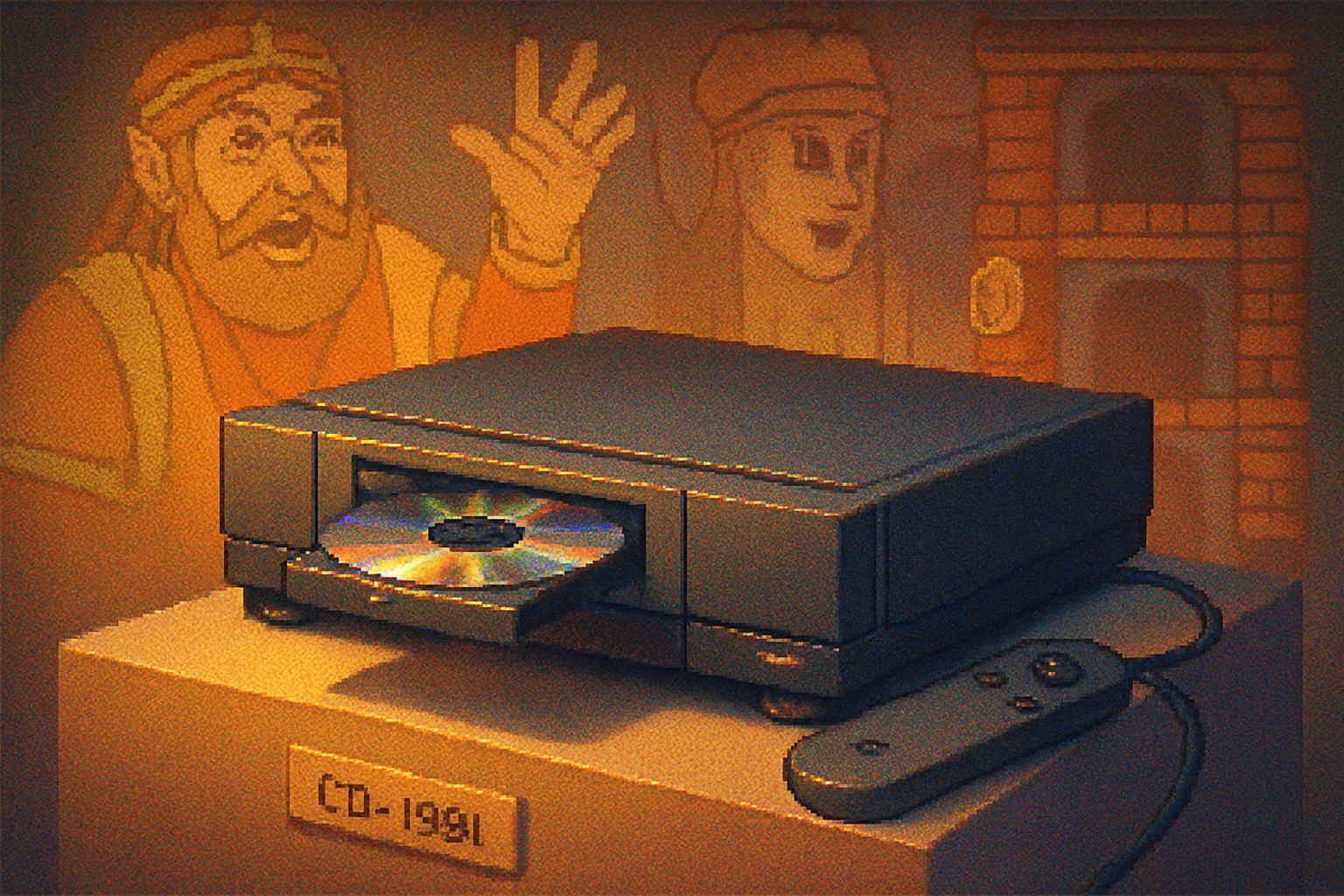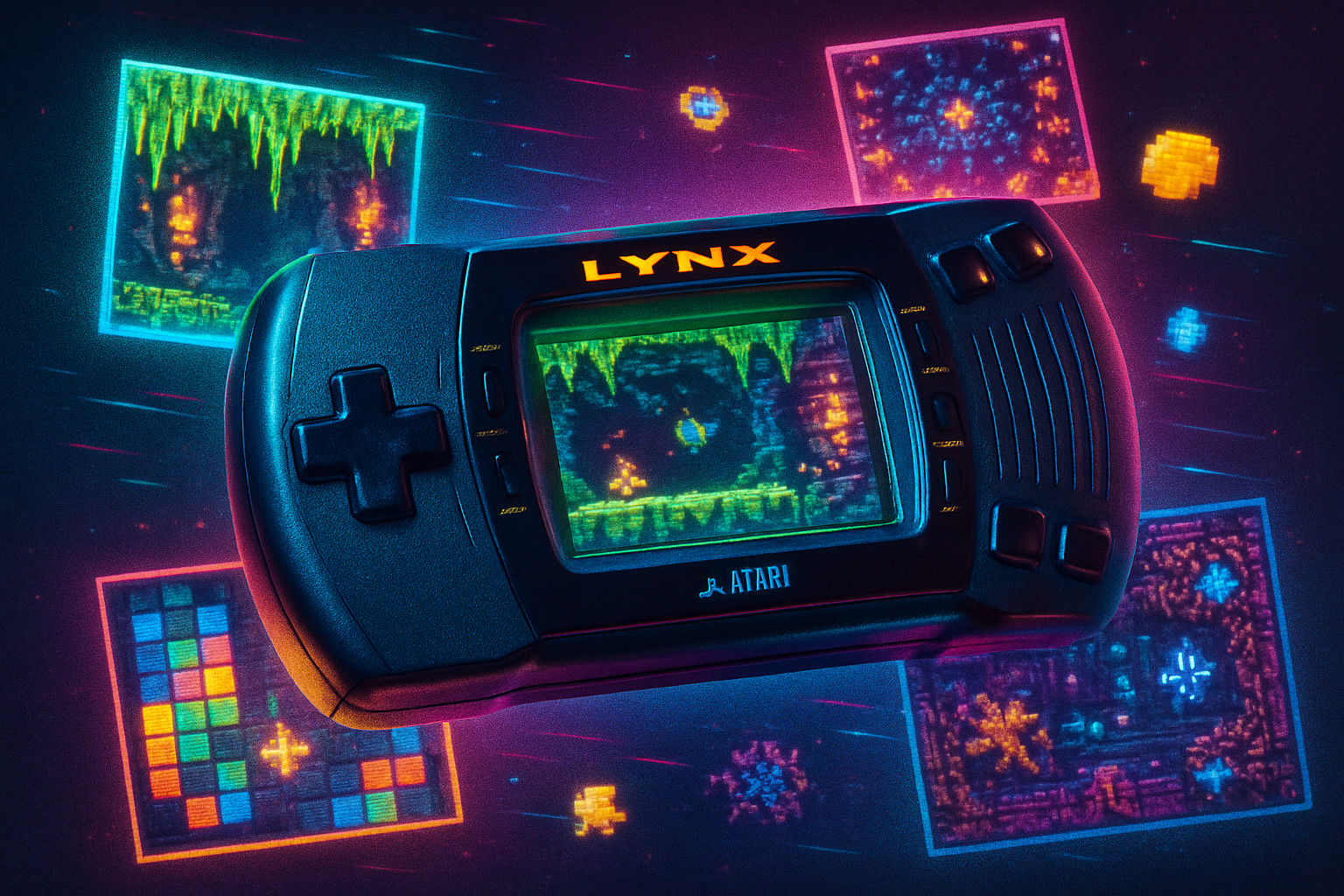· retrogaming · 6 min read
The Hidden Gems of the CD-i: Games You Didn't Know You Needed to Play
The Philips CD‑i has a reputation for cringe-worthy licensed oddities. Look closer and you'll find surprising, playable treasures: FMV curios, clever ports, and weird experiments that reward patience. Here's a guide to the CD‑i games worth rescuing from thrift‑store purgatory.

I found my first CD‑i disc inside a battered shoebox at a flea market: a black jewel case, a label half‑peeled, the word “interactive” printed by someone who still believed marketing could mean magic. I bought it for two dollars and a story. I left with an obsession.
If you think the Philips CD‑i is just a museum piece for memes-Zelda cartoons and Hotel Mario cutscenes-you’re not wrong. But you’re also missing a whole undercurrent of genuinely interesting games that were either experimental, ahead of their time for the hardware, or simply people trying something different with a CD and a handful of FMV frames.
The CD‑i has a reputation (deserved in places) as the console of misplaced corporate ambition. But like thrift‑store clothing, some things are only embarrassing until you try them on. The trick is knowing which ones actually fit.
Why the CD‑i still matters
The CD‑i (Compact Disc Interactive) was Philips’ answer to the mid‑90s CD revolution: multimedia, FMV, and an attempt to make a living room device that did more than play cartridges. It failed commercially, but failure is a good breeding ground for experiments. Because publishers were trying to understand what a disc could do, you get odd hybrids-FMV puzzle games, cinematic platformers, and ambitious ports that squeezed surprisingly modern ideas out of dated hardware.
For more background on the hardware and library, see Philips CD‑i on Wikipedia.
How to read this list
I’m not bothering with the obvious infamy (you know which Zelda games I mean). Instead, here’s a short list of lesser‑celebrated CD‑i titles that are genuinely interesting to play today: either because they succeed where the platform usually failed, or because they contain ideas that are still worth experiencing.
Each entry explains what the game is, why it’s a hidden gem, how it feels today, and a quick play tip.
Burn:Cycle - Cyberpunk FMV puzzles that still feel sly
Why it matters: Burn:Cycle is the CD‑i’s answer to the mid‑90s fascination with cyberpunk and FMV. It blends puzzles with branching FMV sequences; it’s not just a tech demo, it asks you to think.
What to expect: A dense, neon‑soaked interface where you solve logic puzzles that progress the story. The FMV is absolutely of its era-grainy, earnest actors-but the puzzles are well designed and the atmosphere is intact.
Modern appeal: If you like games that treat FMV as a storytelling layer rather than a gimmick, Burn:Cycle scratches that itch. It’s more satisfying than the average FMV relic because the payoff depends on gameplay competence.
Play tip: Save early and often if you can. The branching structure can trap you in unwinnable states without a restore.
Reference: https://en.wikipedia.org/wiki/Burn:Cycle
Lemmings (CD‑i) - A familiar puzzle mind‑bender with a CD‑era sheen
Why it matters: Lemmings is a splendidly portable idea-tiny creatures, tiny disasters, huge emergent complexity. The CD‑i port isn’t a curiosity so much as a way to experience that design on a different machine; it’s faithful and very playable.
What to expect: The classic level design and brain‑twisting solutions. If you’ve never played Lemmings, imagine engineering tiny lives with a finite toolbox and watching some of your decisions end in spectacular, charming failure.
Modern appeal: Timeless puzzle design. The CD‑i version isn’t revolutionary, but it’s a good example of how solid mechanics can outlast questionable hardware.
Play tip: Approach each level like a miniature engineering problem-plan before you place.
Reference: https://en.wikipedia.org/wiki/Lemmings_(video_game)
Flashback (CD‑i) - Cinematic platforming that inspired a generation
Why it matters: Flashback is one of the great cinematic platformers-fluid rotoscoped animation, tight controls, and a sci‑fi noir atmosphere. Seeing it on CD‑i proves the console could host genuinely excellent third‑party games.
What to expect: Smooth character animation, puzzleish exploration, and platforming that rewards patience rather than button‑mashing. It’s a blueprint for many modern genre hybrids.
Modern appeal: People who love well‑crafted platformers and retro art direction will find Flashback engaging. It still holds up mechanically.
Play tip: Treat movement as narrative: momentum and positioning matter more than frantic hops.
Reference: https://en.wikipedia.org/wiki/Flashback_(video_game)
Mad Dog McCree - The Wild West FMV shooter done with brittle charm
Why it matters: FMV rail shooters are a guilty pleasure; Mad Dog McCree is the archetype. On the CD‑i it’s rough, theatrical, and oddly addictive-an interactive B‑movie where bad acting becomes the point.
What to expect: Quick reflexes, clumsy FMV transitions, and a strange sense of participation in cheap western melodrama.
Modern appeal: Play it for the experience-it’s like playing a pulp movie where you get to control the trigger. It’s not haute cuisine, but it’s fun in the way roadside attractions are fun.
Play tip: Embrace the silliness. The game rewards pattern recognition more than accuracy.
Reference: https://en.wikipedia.org/wiki/Mad_Dog_McCree
Hotel Mario - Guilty pleasure, short and bizarre (yes, really)
Why it matters: The infamously mocked Mario CD‑i game is short, peculiar, and-to its surprise-enjoyable as a bite‑sized puzzle platformer if you lower your expectations about production values and singing plumbers.
What to expect: Small, room‑based puzzles where you shut doors on Goombas and Bowsers. The cutscenes are why people mock it; the gameplay is why it can be oddly playable.
Modern appeal: It’s ideal for a nostalgic laugh and a quick playthrough that won’t waste your evening.
Play tip: Treat it like a microgame collection; don’t expect a Mario masterpiece.
Reference: https://en.wikipedia.org/wiki/Hotel_Mario
How to play these today without losing your mind
- Hardware - Impressive collectors restore working CD‑i units, but they’re heavy and flaky. If you want authenticity, look for a functional player bundle; be prepared for maintenance.
- Emulation - There are emulators that support CD‑i disc images. I won’t link to ROM sites, but a legal rule of thumb: keep emulation for disks you own.
- Physical media - eBay, local retro shops, and flea markets are still the best sources. Discs are abundant; jewel cases are rare.
What to look for in a CD‑i hidden gem
- Games that use CD audio creatively - the console had strengths in music and branching audio, and some titles use that to great effect.
- FMV that complements rather than replaces gameplay - the best CD‑i titles made video a mood, not the entire game.
- Ports that respect the source material - Flashback and Lemmings are proof some developers cared enough to do the job properly.
Final argument: beneath the mockery, a handful of good games
If you view the CD‑i as a joke, you’re doing it an injustice. Corporate mistakes make for adventurous design by people who had to improvise. The CD‑i’s library is an archaeological dig: mostly brick and ash, but every so often the shovel hits something lacquered and unexpected.
So yes: bring a skeptical smile and a magnifying glass. The hidden gems of the CD‑i aren’t polished AAA epics. They’re smaller, stranger, and more interesting-games that show what happens when designers used a strange machine to try interesting things.
Happy digging.
References
- Philips CD‑i - https://en.wikipedia.org/wiki/Philips_CD-i
- Burn:Cycle - https://en.wikipedia.org/wiki/Burn:Cycle
- Lemmings - https://en.wikipedia.org/wiki/Lemmings_(video_game)
- Flashback (video game) - https://en.wikipedia.org/wiki/Flashback_(video_game)
- Mad Dog McCree - https://en.wikipedia.org/wiki/Mad_Dog_McCree
- Hotel Mario - https://en.wikipedia.org/wiki/Hotel_Mario



